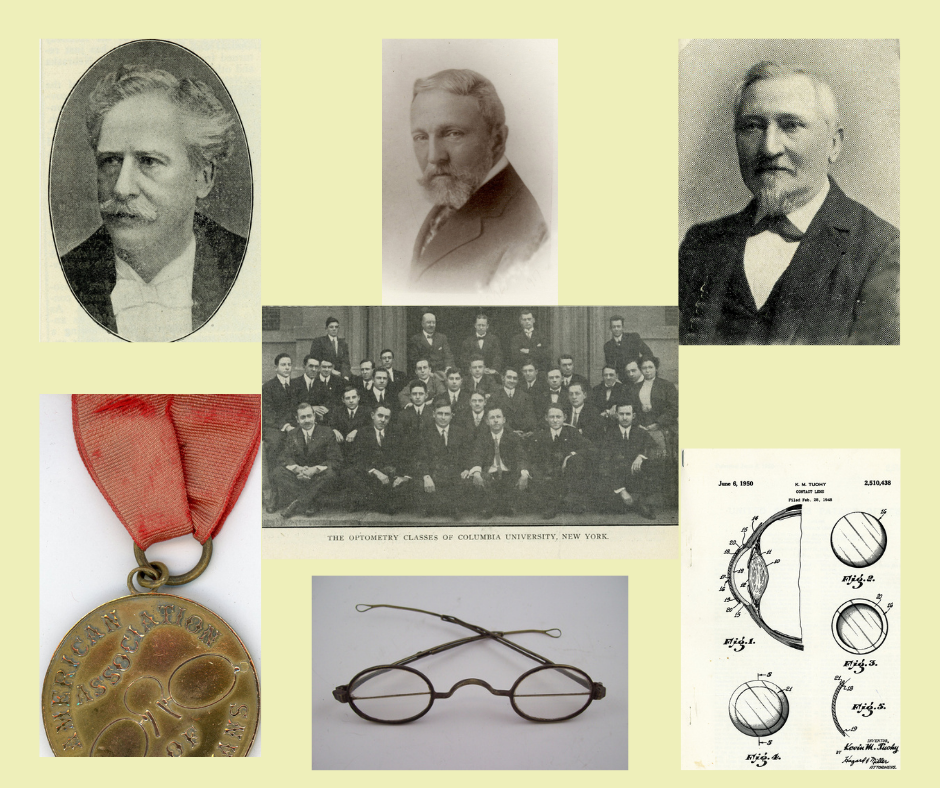World Optometry Day (March 23rd) this day is an opportunity to celebrate optometrists and eye care professionals worldwide. To create awareness about optometry and the critical role optometry plays in discovering undetected injury, illness, and low vision.
Optometry is a specialized healthcare profession that is autonomous, educated, and regulated (licensed/registered). Optometrists are the primary healthcare practitioners of the eye and visual system who provide comprehensive eye and vision care, which includes refraction, dispensing detection/diagnosis and management of disease in the eye, and the rehabilitation of conditions of the visual system.
Optometry and optics have a substantial history. The science or art of optometry dates back to the middle ages when polished “reading stones” were used to magnify text. The Arab scholar, mathematician, and astronomer Ibn al-Haytham was the first to suggest that smoothed glass might assist someone suffering from visual impairment.
By the end of the 13th-century primitive nose spectacles made of mineral glass lenses fitted into bone, metal, or leather and were used by priests and friars with an origin based in Florence or Venice. By the 18th century, frames featured two solid earpieces for the first time.
Highlights in the Timeline of Optometry:
- 1604 Johannes Kepler a German astronomer describes the function of the retina and demonstrates concave lenses to correct myopia and convex lenses to correct hyperopia. He also described central and peripheral vision.
- 1611 Kepler invented the Keplerian telescope.
- 1621 Willebrord Snellius (1580–1626) found the mathematical law of refraction, now known as Snell’s law.
- 1720s Monocles were first developed in Germany originally called an eye-ring.
- 1770 Lorgnettes were invented in England by George Adams.
- 1783 John McAllister Sr. opens the first US shop for optometric services in Philadelphia. By 1816 John McAllister and Son were making gold and silver spectacles in a family business that survived until the early 20th century.
- 1784 Benjamin Franklin invents split bifocal lenses for spectacles.
- 1821 Cylindrical lenses were first developed.
- 1830 George Cox’s ‘trial box’ allowed the user to flip quickly between lenses on the end of a handle, the origin of the lens trier
- 1840s Pince-nez glasses (Pinch-Nose) become popular in the US and Europe.
- 1843 invention of the trial lens case facilitated the determination of a lens prescription, independent of the vending and dispensing of spectacles.
- 1846 Moritz von Rohr and Carl Zeiss (with the assistance of H. Boegehold and A. Sonnefeld) developed the Zeiss Punktal spherical point-focus lenses that dominated the eyeglass lens field for many years.
- 1851 A German physician, Herman VonHelmholtz, invents the ophthalmoscope and is the first to see the interior of the living eye.
- 1853 John Jacob Bausch, a German immigrant, set up a tiny optical goods shop in Rochester, New York. Borrowing money from his friend Henry Lomb.
- 1862 Hermon Snellen a Dutch ophthalmologist devises test types and eye charts used to measure visual acuity.
- Albrecht von Graefe a Prussian-German ophthalmologist developed the first instrument for measuring intraocular pressure
- Ferdinand Monoyer (1836 – 1912) was a French ophthalmologist, who proposed the term “diopter” for lens power.
- 1873 Cuignet demonstrates the principle of retinoscopy, the retinoscope is introduced.
- 1888 the first successful scleral contact lenses made to correct vision is developed.
- 1898 The formation of the American Association of Opticians. A name change came in 1910 to the American Optical Association and in 1919 the American Optometric Association.
- 1901 Minnesota passes the first state law recognizing and regulating the practice of optometry. By 1921 all states had optometry laws.
- 1907 Owen Aves, co-founder of London’s Institute of Optometry patented the first progressive lenses.
- The Swedish ophthalmologist and self-taught mathematician Allvar Gullstrand (1862-1930) invented the slit lamp to illuminate the anterior of the eye. With its rectangular beam of very bright light, he studied the structure of the cornea and the function of the lens.
- 1923 Pennsylvania College of optometry awards the first doctor of optometry (O.D.) degree.
- 1924 The District of Columbia enacts an optometry law, completing a total US coverage.
- 1929 Foster Grant sold their first pair of sunglasses on the Atlantic City Boardwalk.
- 1930 Plastic lenses become available.
- 1932 Zeiss creates the first modern pair of eyeglass frames.
- 1938 Plastic contact lenses were introduced by Theo Obrig and John McMullen.
- 1948 First corneal contact lens patented.
- 1959 Varilux lens is introduced.
- 1968 National Eye Institute (NEI) was established by public law 90–4 89.
- 1971 FDA approves Bausch & Lomb soft contact lenses.
- 1998 Oklahoma enacts the first law allowing optometrists and ophthalmologists to use lasers for certain treatments paving the way for LASIK surgery.
Optometry has evolved from a niche field to a respected discipline through hundreds of years of research. Optometry is a young discipline and has its roots in optics rather than medicine. Education in the early 1900s was provided by private tutors and was very practical and aimed at passing professional exams. It was academised by Physics in the 1920s in the US and UK. Optometry became independent of physics within recognized higher education institutions from the 1930s to the 1940s in the US and the 1960s in the UK.
The future of optometry looks bright. Now, in the first half of the 21st century, the optometric profession is in the process of developing even further, with optometrists heading specialty care practices and becoming more heavily involved in providing medical eye care, all the while continuing to correct refractive errors, dispensing detection/diagnosis and management and the rehabilitation of conditions of diseases of the eye.
#eyegotcha
#worldoptometryday
#PittsburghOptometrist
#PittsburghEyeCare
Sources:

